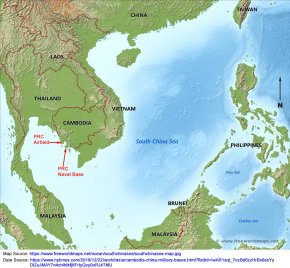Thanks for sharing. Chen Daoxiang, the commander of China’s military garrison in Hong Kong — which holds around 6,000 troops — said his forces were “determined to protect national sovereignty, security, stability and the prosperity of Hong Kong.” His remarks came as China released a new propaganda video which include armed forces practicing shooting at protestors, after which he underscored his support for the city’s chief executive for “rigorously enforcing the law.” Beijing is paving the way to send its military into Hong Kong, a move that could launch a protracted fight. That’s not to say that this is imminent or will even happen, but it’s still a possibilityA news article about the protests in Hong Kong. It is in Dutch, but there is also a video in it which shows the violence used by the police against the protesters.
Big chance that a part of the police in Hongkong are from outside that city, but with Hong Kong uniforms.
Lets hope for not even more violence, history shows that the Communist Party doesn't hesitate to use lethal force.
Protest legt luchthaven Hongkong plat, vluchten geannuleerd
In addition, related to discussions on China:
(1) on 1 June 2019, the US DOD updated its "Indo-Pacific Strategy Report," which reflects the attention of the US to the Indian Ocean and South China Sea (see this DOD pdf). This IPSR paper will hopefully reduce the chance of miscalculation by one party. This 2019 Department of Defense Indo-Pacific Strategy Report (IPSR) affirms the enduring U.S. commitment to stability and prosperity in the region through the pursuit of preparedness, partnerships, and the promotion of a networked region.
(2) on 7 August 2019, Prof. Anthony H. Cordesman of CSIS published a comprehensive series of articles on China and the United States: Cooperation, Competition, and/or Conflict. The net assessment is divided into eight major sections, with links to 3 sections provided here:
- PART ONE: China's National Strategy provides summaries of China’s evolving strategy using direct quotes from its key white papers, particularly its 2019 Defense White Paper. It then provides similar excerpts from the new U.S. National Security and National Defense Strategies that the United States issued in 2017 and 2018, and from assessments of Chinese strategy by the U.S. Director of National Intelligence, the Department of Defense, DIA, and INDOPACOM.
- PART SIX: China, the U.S., and Other Asian Powers — Competing Claims in Asia and the Pacific focuses on the competing Chinese and other country claims in the Western Pacific and the Chinese build-up of forces in the South China Sea that is a key U.S. strategic concern.
- PART EIGHT: Chinese Force Development and Modernization examines the key force trend in each major aspect of Chinese force development. Once again, the quotes are provided from both Chinese White Papers and U.S. strategy documents and official assessments of China’s forces.
Last edited:

